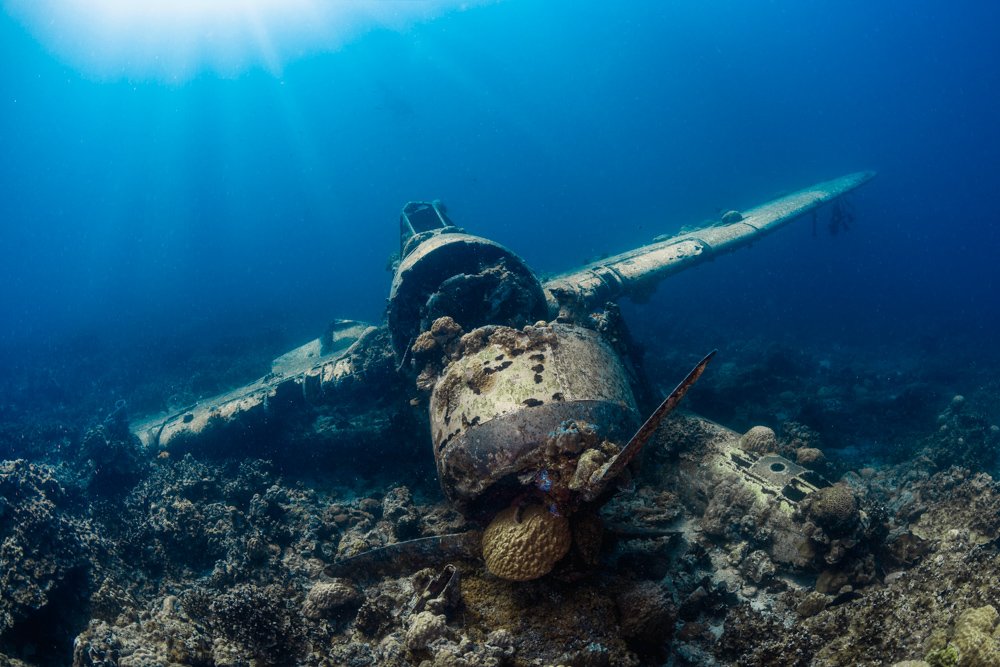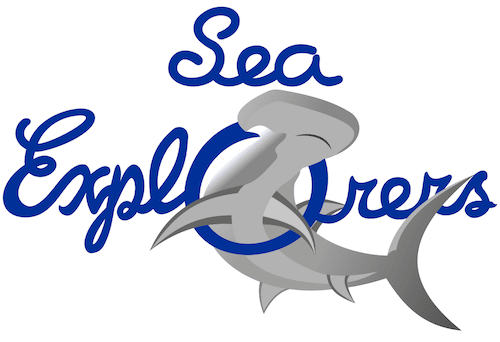
Wreck Diver Course: All You Need to Know
A wreck diver course offers a unique entry into one of the most intriguing areas of scuba diving: exploring underwater wrecks. Through this course, you will gain the specialized skills needed to safely navigate and explore the submerged remains of ships, planes, and other relics resting on the ocean floor.
Read on to discover what a wreck diver course entails, why the Philippines is an ideal setting for wreck diving, and what to expect from this exciting adventure into the past.
What is a wreck diver course?
A wreck diver course is designed to give you the skills and confidence needed to safely explore underwater wrecks, like sunken ships, planes, and other submerged structures. Unlike standard open-water diving, wreck diving comes with unique challenges and requires specialized training for navigating confined spaces and understanding wreck sites. The purpose of this course is to equip you with the techniques and knowledge to navigate these underwater sites responsibly while prioritizing safety and preserving both the wreck and the surrounding marine life.
Breakdown of the key skills you’ll gain in the wreck diver course:
Safety protocols
Safety is the cornerstone of wreck diving. In this course, you’ll learn how to assess wreck stability, monitor your air supply, and avoid the hazards of silt-outs or clouded visibility from disturbed sediment. You will also practice handling entanglement risks and emergency procedures specifically for confined spaces. With these protocols, you’ll be able to explore confidently, knowing you’re prepared for any situation that may arise.
Wreck navigation and mapping
Navigating a wreck can be challenging, as wrecks often have complex layouts with rooms, corridors, and multiple entry points. You will learn techniques for recognizing key landmarks, mapping the layout of a wreck, and using natural or artificial markers to stay oriented. By the end of the course, you will be able to create mental maps of wrecks and safely navigate them, whether you’re exploring on your own or leading others.
Confined space diving techniques
Exploring the interiors of wrecks is an exciting part of wreck diving, but it requires special skills. This course will teach you how to enter, exit, and move through confined spaces while maintaining proper buoyancy and body positioning. You’ll also learn how to avoid disturbing silt or damaging delicate structures. With these techniques, you’ll feel comfortable maneuvering through narrow areas, making your experience safer and more enjoyable.
What to expect in a wreck diver course
A wreck diver course is designed to give you the skills, knowledge, and confidence to explore underwater wrecks safely. The course is structured in a way that gradually builds your understanding of wreck diving, starting with theory and progressing to practical, hands-on experiences. Here’s a breakdown of what you can expect throughout the course:
Course structure and progression
The wreck diver course typically follows a well-established format, starting with theoretical lessons and then moving into practical training in both confined water and open water.
-
Classroom and theoretical learning
The course begins with classroom sessions where you’ll learn the fundamental concepts of wreck diving. This includes understanding the history and types of wrecks you might encounter, the challenges of wreck diving, and the specific safety protocols for navigating wrecks. You’ll also study the principles of wreck mapping, the impact of wrecks on the ecosystem, and how to handle potential hazards like entanglement or silt-outs.
-
Confined water sessions to develop basic skills
Once you’ve grasped the theory, the next step involves confined water training. In a controlled, shallow environment, you’ll practice the basic wreck diving skills you’ll use during actual dives. These skills include maintaining buoyancy in confined spaces, managing your air supply more efficiently, and mastering proper finning techniques to avoid disturbing sediment or damaging delicate wrecks. You’ll also get comfortable with using specialized wreck diving equipment, such as reels and lights, which are essential for safe exploration.
-
Open water dives at actual wreck sites
The final stage of your training involves open water dives at real wreck sites. This is where you put your knowledge and skills to the test, navigating and exploring actual wrecks. Under the supervision of your instructor, you’ll have the chance to practice mapping wrecks, exploring different parts of the wreck, and applying your safety training in real-world conditions. These dives may involve penetration dives, where you enter the wreck itself, or external exploration where you observe the wreck from the outside and assess its structure.
Prerequisites and requirements for taking the course
Before you can start a wreck diver course, there are some basic prerequisites to ensure you’re ready for the challenges of wreck diving including the following:
- Advanced Diver Certification or higher;
- Must be at least 15 years old; and
- In good health.
Wreck Diver Course Philippines: Why take it here
Taking a wreck diver course in the Philippines offers a unique opportunity to dive into history and ecology. The country is home to some of the most significant wreck diving sites in the world, where you can explore sunken ships and aircraft while experiencing vibrant marine life that has made these wrecks its home. The Philippines provides not only historically rich wrecks but also stunning underwater environments, making it an ideal destination for wreck diving training.
Popular diving destination in the Philippines
Here are some of the most notable wreck diving sites in the Philippines where you can apply your skills:
Coron Bay
Coron Bay is one of the most famous wreck diving locations in the world, particularly for its WWII Japanese shipwrecks. In these crystal-clear waters, you can explore a series of sunken gunboats, freighters, and supply ships. The wrecks are largely intact and offer diverse penetration opportunities for advanced divers. In addition to historical interest, the wrecks are covered with colorful corals and are teeming with marine life, making them both an exciting dive and an ecological wonder
Subic Bay
Subic Bay is home to a variety of wrecks from both the American and Japanese fleets during WWII, including ships, planes, and tanks. The calm, warm waters make it a perfect spot for divers of all levels, and the wrecks are easily accessible, often lying at shallow depths. The wrecks in Subic Bay are an excellent place to practice wreck diving skills, with a variety of sites ranging from large ships to submerged military vehicles, offering a diverse and rich diving experience.
Puerto Galera
Puerto Galera is another top wreck diving location in the Philippines, known for its combination of historical wrecks and stunning natural beauty. The bay is home to the “El Faro” wreck, a well-preserved Spanish galleon that sank in the 17th century, as well as several other sunken ships and aircraft from various periods. Puerto Galera offers relatively shallow wrecks, making it ideal for divers new to wreck diving, yet still challenging enough for more experienced divers.
Benefits of taking a wreck diver course
Taking a wreck diver course offers a range of benefits that enhance both your diving skills and your overall diving experience.
Increased safety and confidence for exploring wrecks
One of the biggest advantages of completing a wreck diver course is the significant increase in both your safety and confidence. Wrecks present unique challenges and having specialized training ensures you can handle these situations with ease. The course prepares you to stay calm and make informed decisions, giving you the confidence to take on more complex dives and explore wrecks safely.
Unique underwater experiences and exploration opportunities
Wreck diving opens up an entirely new realm of exploration beneath the waves. From sunken ships and planes to historic military wrecks, these submerged relics offer unparalleled opportunities to discover pieces of history in their natural underwater habitats.
Open up a new realm of underwater photography and videography
If you have an interest in underwater photography or videography, the wreck diver course also opens up exciting new opportunities to capture stunning images. Wrecks are dramatic backdrops for photos and videos, providing unique compositions with their eerie interiors, scattered debris, and marine life thriving around them.
Planning your trip: best time for a wreck diver course in the Philippines
The ideal time for diving in the Philippines is typically during the dry season, which runs from December to May. During these months, you’ll experience calm seas, sunny weather, and warm temperatures, making it perfect for wreck diving. The dry season also brings clear skies and less rain, which means fewer disruptions to your dive plans.
The peak season for diving in the Philippines is from January to April, when conditions are at their best—visibility is excellent, and the water is calm and warm. However, even during the rainy months (June to November), diving is still possible in many areas, although you may experience some rough seas or reduced visibility. If you’re flexible with your schedule, visiting during the off-peak season can mean fewer crowds and a more serene experience.
Conclusion
If you’re looking to expand your diving skills and explore the underwater world in a whole new way, taking a wreck diver course is the perfect next step. With specialized training, you’ll gain the knowledge and confidence to safely navigate and explore sunken ships, planes, and other historical wrecks, unlocking a whole new realm of adventure beneath the waves.
With the proper training, guidance, and safety skills from a wreck diver course, you’ll be ready to discover the incredible wrecks of the Philippines and the rest of the world, adding a whole new dimension to your diving experiences.
For more information on the wreck diver course Philippines, check out Sea Explorers.



